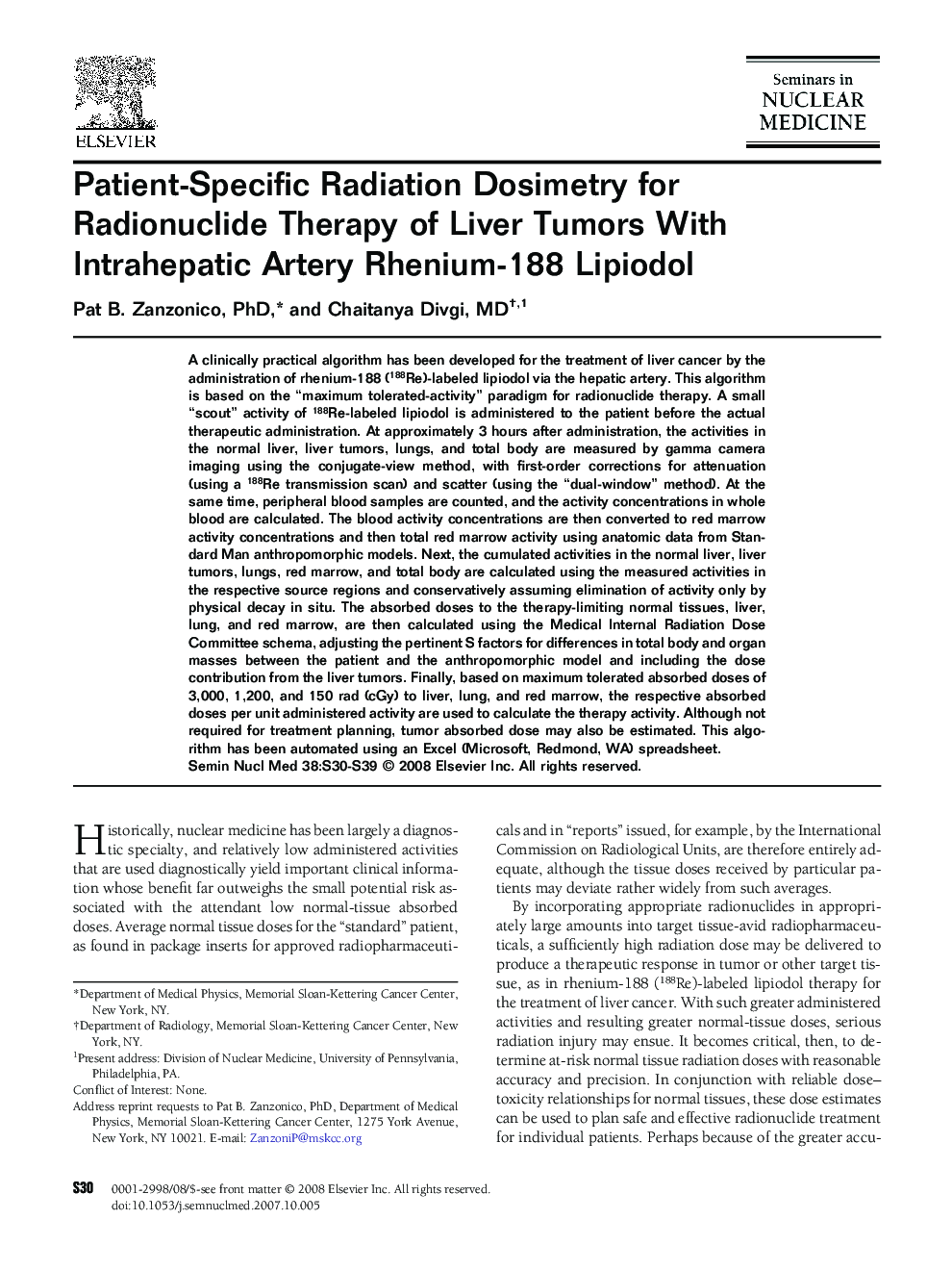| Article ID | Journal | Published Year | Pages | File Type |
|---|---|---|---|---|
| 4251160 | Seminars in Nuclear Medicine | 2008 | 10 Pages |
A clinically practical algorithm has been developed for the treatment of liver cancer by the administration of rhenium-188 (188Re)-labeled lipiodol via the hepatic artery. This algorithm is based on the “maximum tolerated-activity” paradigm for radionuclide therapy. A small “scout” activity of 188Re-labeled lipiodol is administered to the patient before the actual therapeutic administration. At approximately 3 hours after administration, the activities in the normal liver, liver tumors, lungs, and total body are measured by gamma camera imaging using the conjugate-view method, with first-order corrections for attenuation (using a 188Re transmission scan) and scatter (using the “dual-window” method). At the same time, peripheral blood samples are counted, and the activity concentrations in whole blood are calculated. The blood activity concentrations are then converted to red marrow activity concentrations and then total red marrow activity using anatomic data from Standard Man anthropomorphic models. Next, the cumulated activities in the normal liver, liver tumors, lungs, red marrow, and total body are calculated using the measured activities in the respective source regions and conservatively assuming elimination of activity only by physical decay in situ. The absorbed doses to the therapy-limiting normal tissues, liver, lung, and red marrow, are then calculated using the Medical Internal Radiation Dose Committee schema, adjusting the pertinent S factors for differences in total body and organ masses between the patient and the anthropomorphic model and including the dose contribution from the liver tumors. Finally, based on maximum tolerated absorbed doses of 3,000, 1,200, and 150 rad (cGy) to liver, lung, and red marrow, the respective absorbed doses per unit administered activity are used to calculate the therapy activity. Although not required for treatment planning, tumor absorbed dose may also be estimated. This algorithm has been automated using an Excel (Microsoft, Redmond, WA) spreadsheet.
